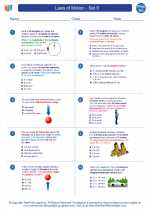Ordovician Period
The Ordovician Period is the second period of the Paleozoic Era, spanning from approximately 485 million years ago to 443 million years ago. It was named after the Celtic tribe of the Ordovices and was first defined by Charles Lapworth in 1879.
Geology and Climate
During the Ordovician Period, most of the Earth's landmasses were collected into a single supercontinent called Gondwana. The climate was relatively warm, and the sea levels were high, leading to the formation of shallow seas in many parts of the world.
Life Forms
The Ordovician Period saw an explosion of diverse marine life, including a variety of invertebrates such as trilobites, brachiopods, and cephalopods. The first jawed fish also appeared during this time, marking a significant step in the evolution of vertebrates.
Study Guide
- What was the name of the supercontinent during the Ordovician Period?
- Describe the climate during the Ordovician Period.
- Identify three examples of marine life that thrived during the Ordovician Period.
- Explain the significance of the appearance of jawed fish in the Ordovician Period.
[Ordovician] Related Worksheets and Study Guides:
.◂Physics Worksheets and Study Guides High School. Laws of Motion - Set II

 Worksheet/Answer key
Worksheet/Answer key
 Worksheet/Answer key
Worksheet/Answer key
